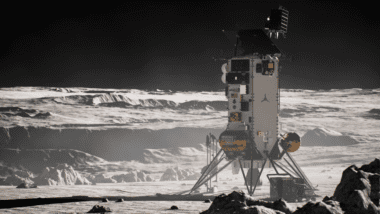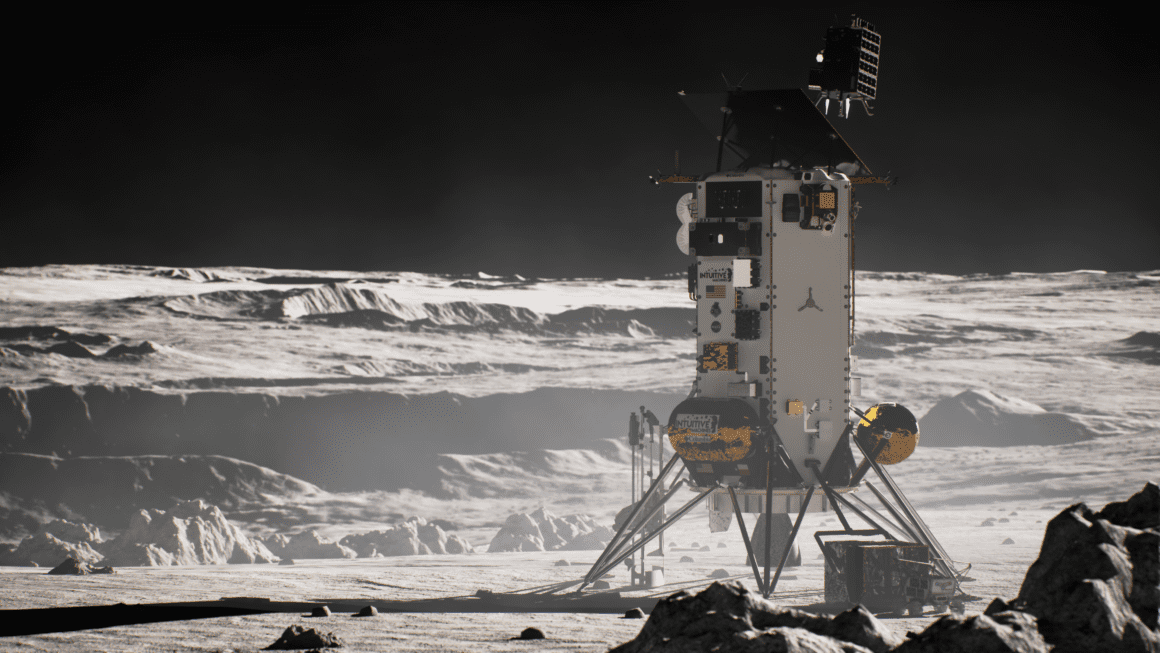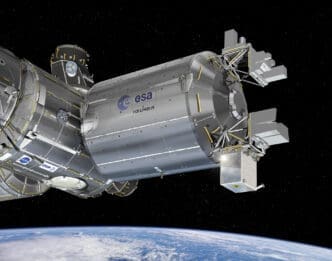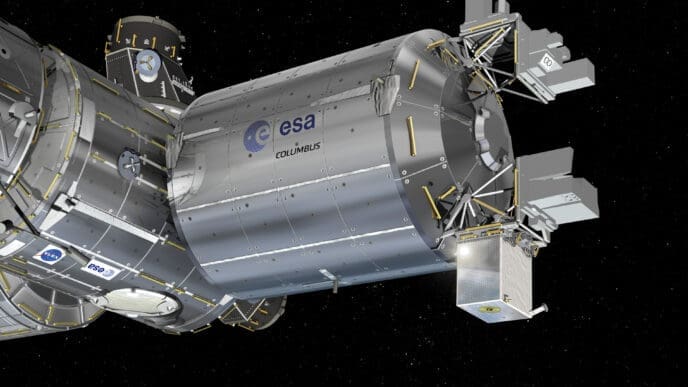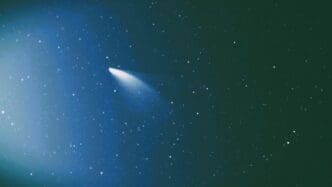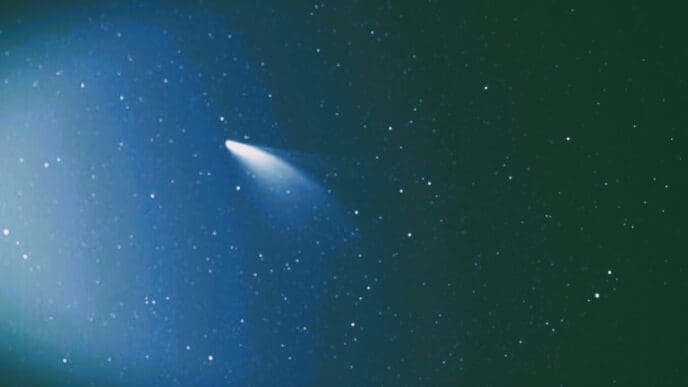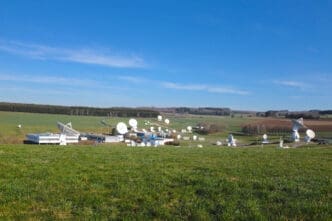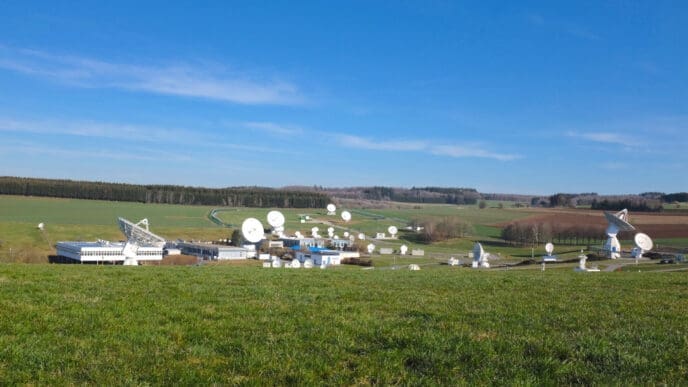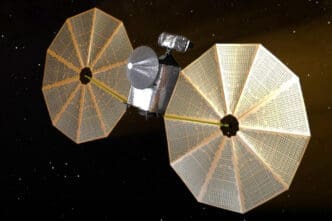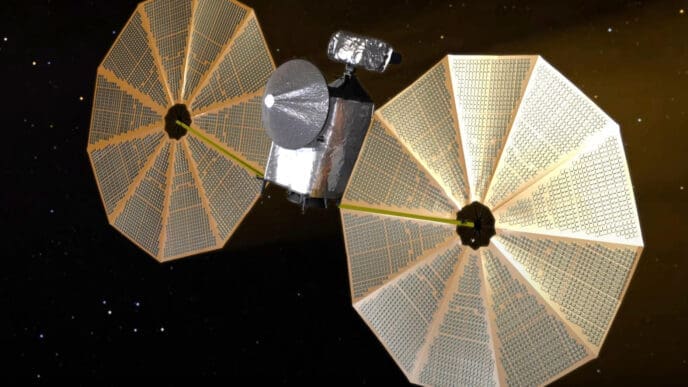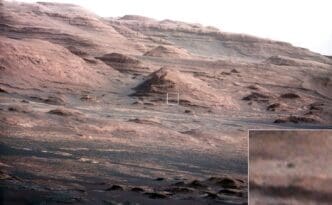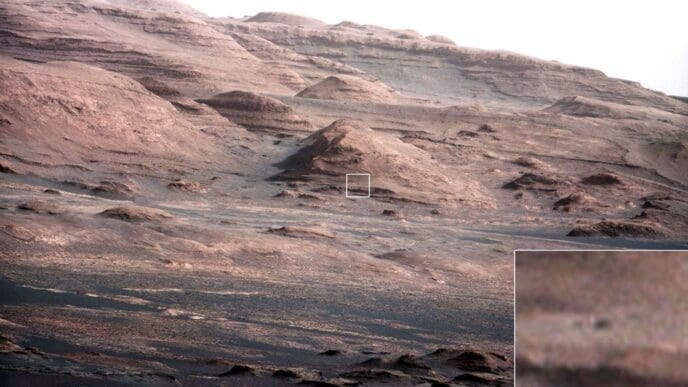NASA is getting ready for a game-changing experiment on the Moon. The Polar Resources Ice Mining Experiment-1, or PRIME-1, is on the brink of exploring and analyzing the Moon’s resources. Its findings could hold the key to sustainable human presence in space, specifically under NASA’s Artemis campaign.
With two innovative instruments, PRIME-1 is set to deep dive into the Moon’s subsurface, opening new doors to uncover mysteries. This mission could revolutionize our understanding of lunar resources, potentially paving the way for future space explorations.
The Key Instruments of PRIME-1
NASA’s PRIME-1 mission is powered by two pioneering instruments designed to delve deeper into the Moon’s secrets. The Regolith and Ice Drill for Exploring New Terrains, or TRIDENT, will drill into the Moon’s surface, collecting valuable samples. Meanwhile, the Mass Spectrometer Observing Lunar Operations (MSOLO) analyzes the composition of gases released from these samples. Together, these tools will provide a clearer picture of the Moon’s subsurface and its potential resources.
TRIDENT: The Lunar Drill
TRIDENT, developed by Honeybee Robotics, is a rotary percussive drill capable of reaching depths of up to 3.3 feet. It’s equipped with durable carbide teeth to handle the Moon’s challenging terrain. The drill will extract samples, each approximately 4 inches long, which will help scientists study the distribution of trapped gases beneath the surface.
Unlike the drills used during previous Apollo missions, TRIDENT operates remotely from Earth. This offers more precise control in challenging conditions, gathering essential data on subsurface temperatures and mechanical properties.
MSOLO: Decoding Lunar Gases
The MSOLO, crafted by INFICON, is a refined mass spectrometer adapted for space missions. Its job is to analyze gases released by the TRIDENT drilled samples, checking for water ice and other gases trapped beneath the surface.
This data is crucial for understanding how lunar resources can be utilized, offering insights into the Moon’s subsurface composition. Such insights are vital for future lunar missions, helping NASA and partners plan better resource extraction strategies.
Through the precise measurements by MSOLO, scientists anticipate gathering valuable data about the availability and distribution of lunar resources, which could be instrumental for long-term lunar colonization efforts.
NASA’s CLPS Initiative
The PRIME-1 mission is part of NASA’s Commercial Lunar Payload Services (CLPS) initiative. Under this model, NASA collaborates with commercial partners for lunar deliveries, supporting long-term explorations.
As a pivotal customer, NASA uses CLPS to ensure efficient delivery of payloads, which not only aids in the agency’s objectives but also boosts industry growth. Many other customers are on board with future CLPS flights, symbolizing a lucrative and collaborative space exploration environment.
This collaboration marks a significant shift in how space missions are conducted. By leveraging commercial services, NASA is set to reduce costs and accelerate mission timelines, making lunar exploration more feasible.
Preparing for Launch
The Athena lunar lander by Intuitive Machines is set to carry the PRIME-1 to Mons Mouton, a plateau near the Moon’s South Pole. Launch is scheduled from NASA’s Kennedy Space Center, with sights set on February 26.
Mons Mouton presents a unique research opportunity due to its proximity to potential lunar resources, making it an ideal location for PRIME-1’s ambitious goals.
The Role of Space Technology Mission Directorate
NASA’s Space Technology Mission Directorate’s Game Changing Development program funds the PRIME-1 mission. This illustrates the agency’s commitment to advancing space technology and exploration methods.
By investing in such innovative projects, NASA aims to push the boundaries of what’s possible in lunar and space exploration, ensuring its leadership in the field.
Jackie’s Insight of the Moon
“The ability to drill and analyze samples simultaneously helps us gather insights that will shape the future,” said Jackie Quinn, PRIME-1’s project manager at NASA’s Kennedy Space Center.
Her vision underscores the mission’s long-term impact, as understanding local resources becomes crucial for sustaining human life on other planets.
Future Implications
The data collected by PRIME-1 will inform many aspects of future missions, potentially transforming how we approach lunar exploration.
From understanding the Moon’s environment to planning resource utilization, this mission’s insights could be the cornerstone of sustainable human habitation on the Moon.
The Road Ahead
As NASA prepares to embark on this groundbreaking mission, the prospects of discovering sustainable lunar resources are thrilling for the future of space exploration. The success of PRIME-1 will set a new precedent and inspire further innovations. Such strides bring humanity closer to an era where space resources support Earth and beyond.
NASA’s PRIME-1 is more than an experiment; it’s a bold step towards a future where lunar resources support human ventures in space. The findings could redefine space exploration, providing a pathway to prolonged human presence on the Moon.

